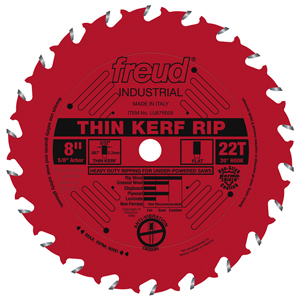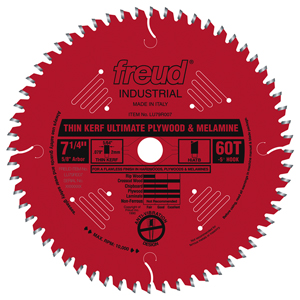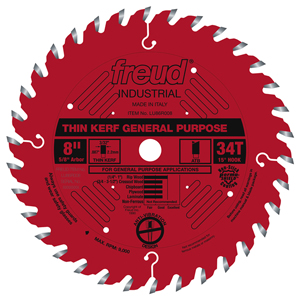
I don’t own a table saw, but I need to get a good, straight-line edge on my board. What saw blade would you recommend I use with a 7-1/4-in. saw? – J.J. Turner
Chris Marshall: You can get a straight cut from a circular saw with any blade if you run the saw’s base along a straightedge. The issue is how quickly and easily the saw will cut the wood or plywood and how clean of a cut you need. If you’re using the saw for lots of long-grain rip cuts on solid wood, buy a ripping blade. It will have about 24 teeth set to an aggressive angle to cut through the wood quickly and shovel out the sawdust effectively. If you’re cutting plywood, where smoothness and minimal edge splintering is really important, get a blade designed for cutting plywood (around 60 teeth set to a less aggressive hook angle). But, if you’re cutting both solid wood and plywood and you want just one blade to do it all reasonably well, buy a combination or “general purpose” blade. It will have about 40 alternate top bevel teeth (denoted by the acronym ATB) designed to cut fairly quickly and smoothly on both wood and sheet materials. It’s a good compromise to both a ripping blade and a fine-cutting sheet goods blade.
Tim Inman: Actually, I would recommend a 40-tooth, 10-inch carbide blade mounted in my friend’s table saw. If you want a “machine-straight” edge on your board, you really need to use the right machine to make that happen. To be more adroit, if you must use a 7-1/4-in. saw, and if you just need to cut one board, then I would get a nice sharp carbide combination blade. In addition, I would also set up a ripping jig using a known straightedge, like the edge of a piece of plywood as the guiding edge for your saw. As a rule, the more teeth on the blade, the better the cut. But just about any of today’s carbide blades will give you a good cut. Focus more on the jigging and you’ll be more likely to get what you want.







